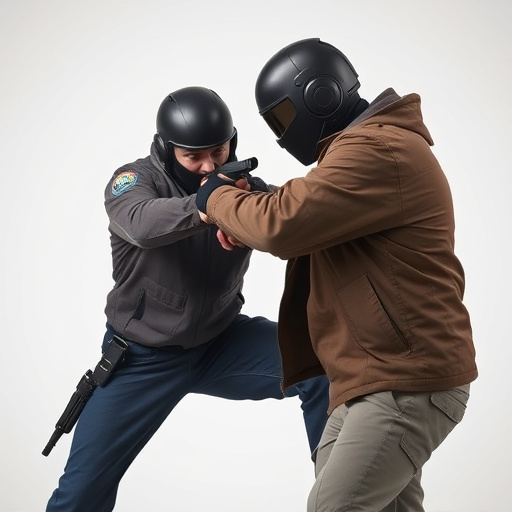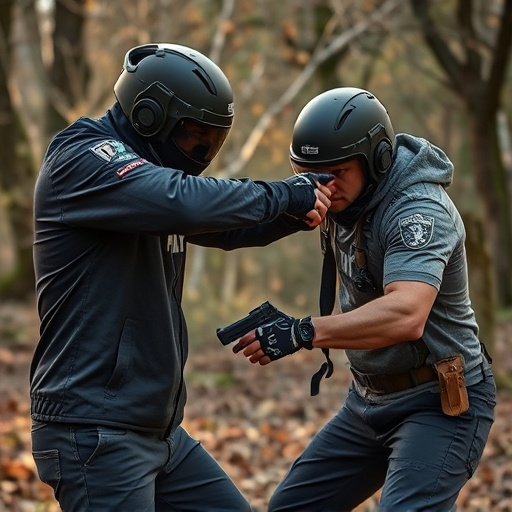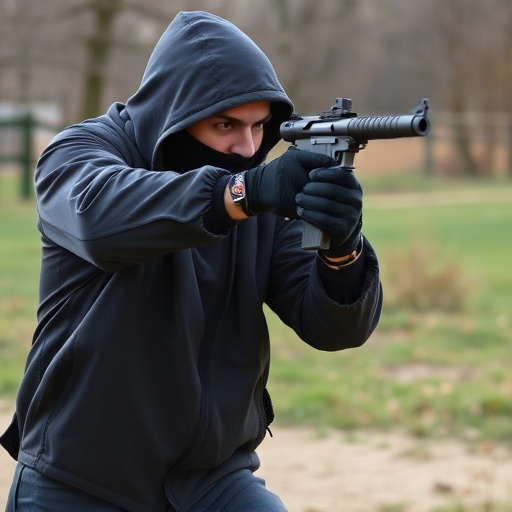Taser vs Stun Gun: Unraveling Differences for Security Companies
Security companies specializing in wholesale stun guns should consider the unique capabilities of Ta…….
Security companies specializing in wholesale stun guns should consider the unique capabilities of Tasers (Electronic Control Devices or ECDs) and stun guns, which serve distinct purposes in personal defense. Tasers are effective at range due to their electrical current disruption, while stun guns offer better control and accuracy during close encounters through high-voltage pulses. Understanding these differences enables companies to stock tools that meet clients' specific needs effectively. Wholesale stun guns are popular for their versatility, non-lethal nature, and ease of concealment, making them a preferred tool for law enforcement and security guards. Staying within legal guidelines involves adhering to local laws, implementing proper training, deployment protocols, and regular maintenance.
“Unraveling the mysteries of Tasers and Stun Guns: A Guide for Security Professionals. This comprehensive article aims to demystify these non-lethal weapons, offering a detailed look at their unique capabilities. We explore the key differences between Taser and Stun Gun technology, their diverse applications in security, and the essential safety considerations for companies deploying these tools. For security professionals seeking reliable solutions, understanding these devices is paramount, especially when sourcing wholesale stun guns tailored to meet industry needs.”
- Understanding Tasers and Stun Guns: A Comprehensive Overview
- Key Differences Between Taser and Stun Gun Technology
- Applications and Use Cases for Wholesale Stun Guns
- Safety Considerations and Legal Aspects of Stun Guns for Security Companies
Understanding Tasers and Stun Guns: A Comprehensive Overview

Tasers and stun guns are both non-lethal weapons designed to temporarily incapacitate a person, but they function differently. Tasers, officially known as Electronic Control Devices (ECDs), use electrical current to disrupt muscle control, causing temporary paralysis. They fire two small probes connected to wires that deliver the electric shock from a distance. Stun guns, on the other hand, emit a high-voltage, low-current electrical pulse through a metal probe in direct contact with the target, causing intense pain and muscular spasms.
For security companies seeking wholesale stun guns, understanding these differences is crucial. Tasers are generally more effective at range and are popular for law enforcement use. Stun guns, however, offer better control and accuracy during close-quarters engagements, making them a preferred choice for personal protection. Security companies can leverage these distinctions to stock appropriate tools based on their clients’ specific needs.
Key Differences Between Taser and Stun Gun Technology

In the realm of personal defense and security, both Tasers and stun guns are often confused as similar devices designed to incapacitate an assailant. However, there are key differences between the two that set them apart, especially for security companies considering wholesale stun guns. Tasers, officially known as Conducted Electrical Weapons (CEWs), use a pair of probes connected to wires to deliver an electrical current through the target’s body, causing muscle spasms and temporary incapacitation. This technology has been extensively tested and is widely used by law enforcement agencies worldwide. On the other hand, stun guns, or electronic control devices (ECDs), operate by using high-voltage, low-current electricity to disrupt the body’s neural system, leading to a brief loss of muscle control. Stun guns typically fire small darts or use contact triggers, as opposed to Tasers’ probe-and-wire design, making them more versatile for self-defense scenarios.
When it comes to security applications, especially for security companies dealing in wholesale stun guns, understanding these differences is crucial. Tasers generally have a longer range and can be more effective against larger targets or individuals wearing protective gear. Stun guns, with their shorter range, are often preferred for close-quarters defense due to their ability to render an assailant unconscious without causing significant harm. Security companies should consider factors like power output, range, and ease of use when selecting between Tasers and stun guns for their fleet, ensuring they meet the specific needs of their operations and clients, including effective deterrence and safety measures.
Applications and Use Cases for Wholesale Stun Guns

Wholesale stun guns are a popular choice for security companies due to their versatility and effectiveness in various security scenarios. These powerful devices are designed to incapacitate an aggressor temporarily, giving users time to escape or call for help. Security professionals can utilize stun guns in high-risk situations such as armed robberies, assaults, or when confronting suspected criminals. Their non-lethal nature makes them a preferred tool for law enforcement and security guards who need to control and subdue individuals without causing permanent harm.
In addition to their use by security companies, wholesale stun guns are also valuable assets for personal defense. They offer an affordable alternative to firearms and can be easily concealed, allowing individuals to protect themselves in public places or while traveling. Whether it’s for professional security or personal safety, these devices provide a swift response during emergencies, ensuring the user has time to assess the situation before seeking further assistance.
Safety Considerations and Legal Aspects of Stun Guns for Security Companies

When it comes to equipping security companies with non-lethal force tools, understanding the nuances between Tasers and stun guns is essential for safety considerations and legal compliance. Stun guns, also known as electroshock weapons, deliver a powerful electric shock that temporarily disables a target, making them popular among personal protection officers and security professionals. However, unlike Tasers, which use two probes to fire an electric current into the body, stun guns emit a continuous electrical discharge from a single contact point, causing intense pain and muscle spasms.
Wholesale stun guns for security companies must adhere to strict legal guidelines that vary by jurisdiction. It’s crucial for businesses in this industry to stay informed about local laws and regulations regarding the use, possession, and distribution of such devices. Proper training, clear deployment protocols, and regular maintenance are vital to ensure the safe and effective use of stun guns, minimizing risks to both users and those they protect.
Tasers and stun guns serve distinct purposes in personal and professional safety, with tasers primarily utilizing electrical current to disrupt muscular control, while stun guns deliver a powerful electric shock. For security companies seeking effective non-lethal force options, wholesale stun guns offer versatile applications, from crowd control and personnel protection to self-defense tools. However, it’s crucial to prioritize safety and adhere to legal guidelines when deploying these devices, ensuring responsible use and minimal impact on public safety.


